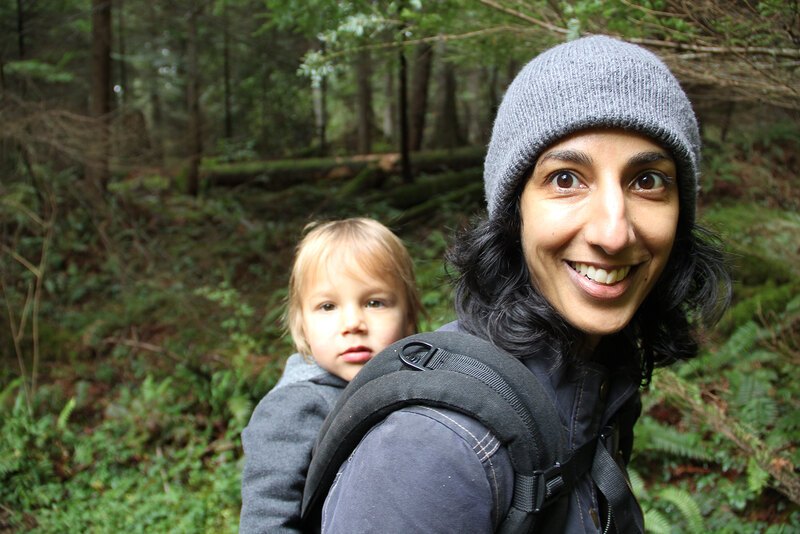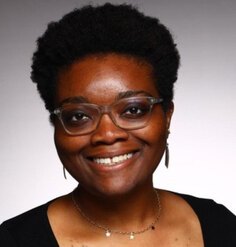Perspectives: Vinita Sidhu

January 10, 2018
Vinita Sidhu, PLA, ASLA is a landscape architect with a 20-year career rooted in the Pacific Northwest. A Partner at Site Workshop, she aspires to be a role model to other women in the profession and to her two daughters.
What drew you to landscape architecture?
I grew up in a picturesque northern New Jersey suburb called Harrington Park, west of the Palisades in an area first settled by the Dutch as small farms. My strongest childhood memories are connected to the landscapes I encountered on a daily basis — the beech tree woods around the reservoir, a corner of crocuses in the spring, piles of yellow and red maple leaves, the tiny cones of the Eastern hemlock and the beautiful elm tree in our neighbor’s backyard. As a family, we spent numerous weekends visiting the seminal gardens of the region and iconic landscapes of the Palisades. Looking back, it’s a pathway that makes so much sense for me. I always had a very strong awareness of and sensitivity to the environment around me and a strong interest in the arts, but I wasn’t exposed to the landscape architecture field growing up, so it was never on my radar.
It wasn’t until I started studying architecture as an undergrad at the University of Pennsylvania that I learned about the profession. I continued to explore other related subjects — art history, preservation, fine arts, and architecture — and was headed towards a career in architecture. On the encouragement of a couple admired professors, I came to realize that my design interests were more suited to landscape architecture. I ended up pursuing my MLA at Harvard’s Graduate School of Design and have never looked back. Twenty years later, the richness and complexity of our field continues to provide endless possibilities.
What is driving you professionally right now?
I became a principal at Site Workshop about a year after my younger daughter was born — the only woman in a partnership of five people. It has been a super challenging but very rewarding transition. Three years later, I find myself becoming a role model for women and mothers within the profession. This isn’t a role I ever expected to be in when I was younger because I saw equally successful proportions of men and women in the schools I attended and in my early years in the profession. It’s only in the last five years as I’ve moved into a position of leadership that I’ve realized there really is a gender gap. In Washington State, 34% of landscape architects, 17% of architects and only 10% of engineers are women. The unfortunate outcome is that our field is missing out by the loss of mid-career women professionals. As a society, we need to understand why this is happening. I’ve been able to come back to work after having kids because I have a strong family support network, including an architect husband who works from home and a network of childcare that includes my mother-in-law.
At Site Workshop, we are very conscious of gender balance and have developed a maternity/paternity policy that we hope will encourage working mothers to grow within our office. As I continue to work through the challenges of being a mother and principal, I aspire to be a role model to other women in the profession and to my two daughters, 8-year-old Devani and 4-year-old Meera.
What challenges is landscape architecture allowing you to address right now?
I feel most passionate about the projects I’m working on with our community-based and non-profit clients, including local PTSAs and the Trust for Public Land. Urban schoolyards are among the most neglected landscapes within our cities, often dominated by aging asphalt paving. This past spring, I served as a guest curator for the Extraordinary Playscapes’ Seattle exhibit at the Center for Architecture and Design. One of the most interesting parts of the exhibit is the history of play timeline. Almost 200 years after the birth of the playground movement in Germany, many of the same social and environmental issues related to our urban playscapes continue to resurface. Achieving successful playscapes continues to be challenged by safety, maintenance, and funding concerns. It takes incredibly creative thinking to work with risk management and maintenance groups to implement playscapes that are inspiring, challenging and fun.
Part of the solution is a great process. Over the past couple of years, I’ve been working with the Trust for Public Land (TPL) on two park projects in the Wenatchee Valley. We are so fortunate to be able to partner with TPL in community engagement processes that go miles beyond the 3-step public meetings typical of most public park projects. For TPL, true connections are vital to successful parks for people. They put an incredible amount of resources into building community connections prior to even starting a design process. The result is a truly positive process with support from the whole community. This leads to built improvements that people will value and care for in years to come and that will improve wellness within the larger community. I will be speaking on this topic at this spring’s WASLA conference and hope to see deeper processes adopted by more of our clients.
What challenge would you give emerging leaders?
Take time to step back from the daily challenges you face with your projects and think long-term about what you can offer the profession and how you can effect positive change. Where do you see yourself in 5 years, 10 years, 20? How are you going to get there? We went through this exercise as a principals group, and I found that I had been so focused on my immediate deadlines that I no longer had any well-defined long-term goals.
I would also recommend that everyone find time to volunteer their services. There are so many challenges within the world right now related to our profession — from population health to climate resiliency and the protection of our public lands. There are also seemingly smaller but just as important issues right in our backyards. Find an issue you’re passionate about and get involved. Apply for a grant. Build a garden. Engage with your community.
Where do you think the profession needs to go from here?
We need to continue to be advocates for our profession, starting with school kids. I had the opportunity to speak at an all-school assembly of over 500 kids this past year. One of the first things I did was ask the kids by a show of hands, how many of them know what a landscape architect is. There were hands in the air, but not enough. Then I told them what I do and I talked to them about how, together, we could improve their schoolyard. That inspired them. I hope a few of them went home that day and taught their parents about landscape architecture.
At this fall’s ASLA conference in Los Angeles, I attended a tour in which a retired landscape architect named Emily Label-Guddy spoke. After retiring, she ran for and won a seat on the City Council of Burbank, California. From what I saw, there are a lot of progressive things happening in Burbank, in no small part because of her leadership. That inspired me. As landscape architects, we are trained to think holistically and across disciplines. Our systems-thinking approach is crucial to the design of open space, from large infrastructure projects to small neighborhood parks. In ten years, I’d like to speak at a school assembly and see every hand go up when I ask them what a landscape architect is. Wouldn’t that be something?
LAF's Perspectives interview series showcases landscape architects from diverse backgrounds discussing how they came to the profession and where they see it heading. Any opinions expressed in this interview belong solely to the author. Their inclusion in this article does not reflect endorsement by LAF.











